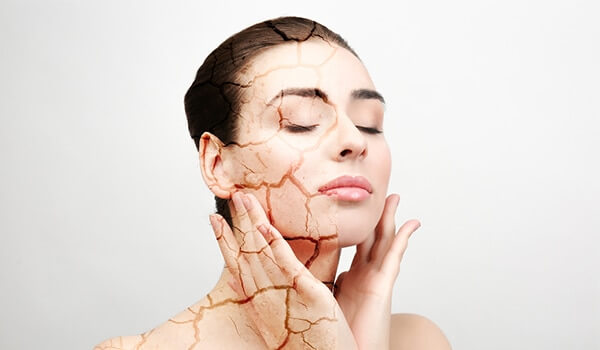
Goodbye to Dry Skin: Winter Skin Care Tips and Tricks
wellhealthorganic.com:winter-skin-care-tips-home-remedies-to-keep-your-skin-moisturisedWinter weather can wreak havoc on your skin, leaving it dry, itchy, and dull. But with a few simple tips and tricks, you can keep your skin soft, supple, and glowing all season longFirst, switch to a thicker, more moisturizing cream or lotion to keep your skin hydrated. You can also add a few drops of oil, like argan or jojoba, to your moisturizer for extra nourishment.
Don’t forget to exfoliate regularly to remove dead skin cells and allow your moisturizer to penetrate more deeply. And if you’re heading outside, make sure to protect your skin from the elements with a scarf or hat.
Lastly, stay hydrated by drinking plenty of water, and avoid hot showers which can strip your skin of its natural oils. With these winter skin care tips, you’ll be saying goodbye to dry skin in no time.
Also read: pwellhealthorganic.com:winter-skin-care-tips-home-remedies-to-keep-your-skin-moisturised
1. Drink more fluids.
Skin dehydration occurs when the body lacks moisture both inside and out. The average person needs from 8 to 12 cups of water per day. Your skin will let you know when you’re dehydrated by making it look dull, tired, irritated, flaky, and rough.
With hot temperatures during the summer months, it’s natural to automatically drink more fluids, but don’t lessen your water intake just because it’s getting cooler outside. You might not be craving a tall glass of ice water as you would in summer, but try room temperature water or a refreshing cup of warm tea to keep hydrated.
2. Wear sunscreen.
Just because it’s not warm outside doesn’t mean there aren’t UV rays in the air, so don’t skimp on the SPF 15 or higher. If you need extra moisture in your winter skincare regimen, look for moisturizing sunscreens or try wearing your night moisturizer with your sunscreen over it. Nighttime creams tend to have richer, more emollient ingredients that could be great during winter months or traveling to a cold area.
3. Consider adding and changing products based on the season.
Your skincare needs may change drastically between seasons. That’s particularly true if you live in an area with extreme temperature fluctuations between summer and winter (or between outside and inside air temperatures, thanks to central heating).
If you have skin that experiences more dryness in winter than other seasons try adding a serum to your daily regimen. Hemp seed oil is a great addition because it provides extra moisture and hydration. Also, consider switching to moisturizing formulas in everything from cleansers to cosmetics.
4. Avoid long showers and baths.
Nothing feels better on a cold day than a long, steamy, hot bath – but long exposure to hot water can further dehydrate your skin by stripping the oils from the surface. So, keep them short and on the cooler side, if possible.
Use only moisturizing bubble baths, soaps, or shower gels that are sulfate-free and full of moisturizing ingredients like Aloe vera.
5. Moisturize before going to bed.
Before browsing on social media until you fall asleep, make sure you do a good nighttime skincare routine not only on your face but the rest of your body. Slather on your favorite hand cream and be sure to rub it into your cuticles and elbows, too. Do the same with your feet and legs. If it gets too cold at night, wear a pair of cotton socks to minimize sleep disruptions.
6. Take care of your lips.
Chapped lips in the cold season are a downer. They can be painful when exposed to extremely cold temperatures, and chapping can lead to infections. Make sure to protect your lips with a moisturizing balm that includes SPF.
7. Don’t forget your hands.
Just like your lips, the skin on your hands is thin and delicate and can be susceptible to chapping in cold weather. Keep your hands moisturized with hand cream and reapply throughout the day, especially after washing them. To make it convenient, carry travel-sized hand cream wherever you go.
8. Double down on moisturizer.
Double down and be incredibly diligent with your moisturizing products. Always apply them after your shower or bath when your skin is still damp to take advantage of the absorption levels. Look for skin moisturizing ingredients like aloe, shea butter, olive, hemp seed oil, and coconut oils. You may also need to reapply throughout the day to keep your skin hydrated and elastic.
9. Invest in hydrating face masks or make your own!
Applying a facial mask or mask sheet is a convenient way to hydrate your face a few times a week. You can also try my favorite DIY hydrating face mask recipe.
All you need are three simple ingredients:
- Three tablespoons of oatmeal
- Two tablespoons of aloe vera gel
- One tablespoon of honey
Cook the oatmeal with water. Add two tablespoons of aloe vera gel and one tablespoon of honey to the hot oatmeal. Allow the oatmeal to cool and then apply to the face. Leave on for 15-20 minutes. Oatmeal and honey are known for their hydrating properties, and the aloe vera gel has skin conditioning ingredients.
To finish, wash thoroughly using warm water and a gentle, sulfate-free cleanser. Pat your face dry with a clean towel and make sure you have removed all traces of the mask before applying a hydrating moisturizer.

